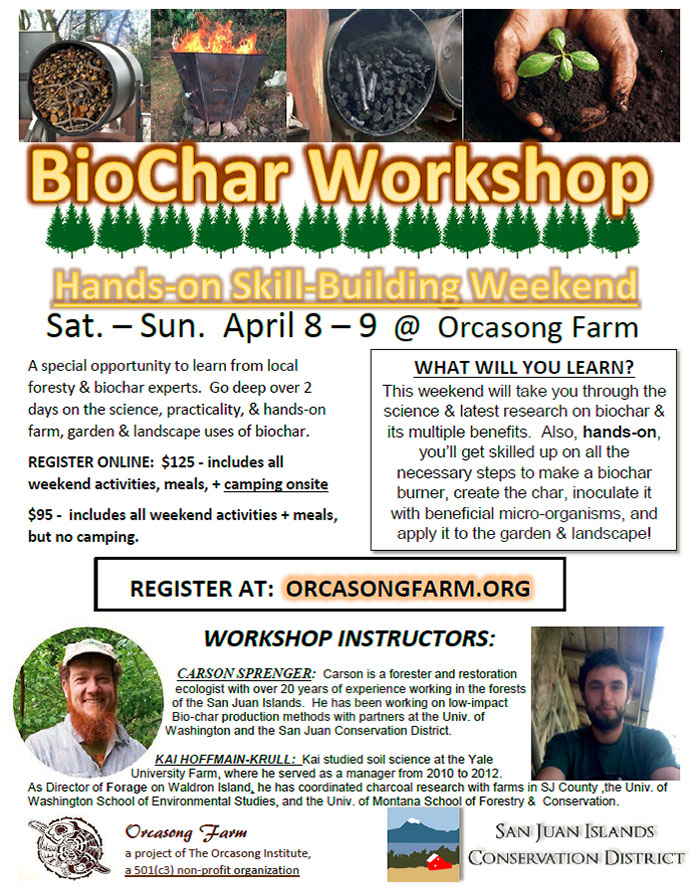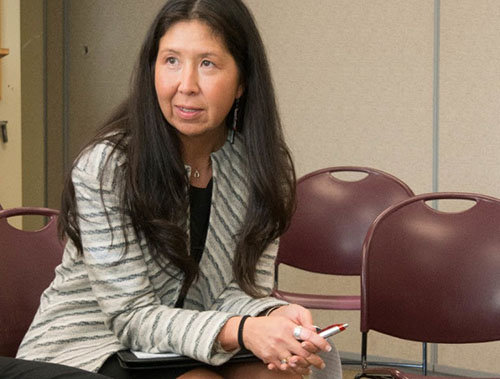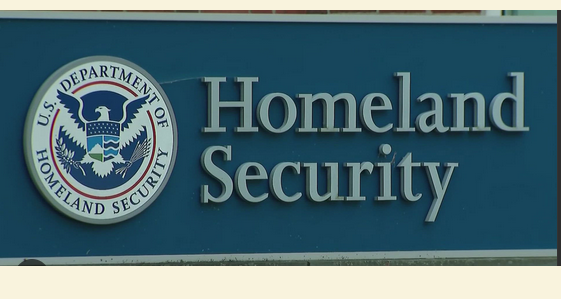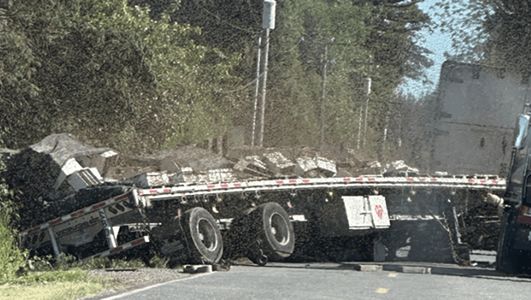Saturday – Sunday, April 8 – 9, Orcasong Farm
— from San Juan Islands Conservation District —

**If you are reading theOrcasonian for free, thank your fellow islanders. If you would like to support theOrcasonian CLICK HERE to set your modestly-priced, voluntary subscription. Otherwise, no worries; we’re happy to share with you.**








I’m heartened by the idea of low-impact bio-char production, because from what I have read, like any good idea, if it’s over-done or done the wrong way with the wrong things, it’s anything but low-impact for forest ecosystems – unless primarily agricultural waste is being used. I don’t understand what ‘forestry waste’ might be – I’m assuming that means things that would ordinarily get burned. Hopefully it’s not condoning using things like naturally occurring fallen branches and leaves which help build the understory, and which the forest floor uses for its own soil production.
Would Carson Sprenger and/or Kai Hoffman-Krull be willing to educate the general public more about bio-char and its impacts on forest ecosystems, perhaps with a guest editorial here on Orcas Issues about bio-char production? I think it would be a fascinating read. What ways and materials of producing bio-char will be taught and condoned? What best-management practices will be taught? How will this benefit the health of our forests here, as well as farmland soils?
Would production use primarily waste products? Where would these be obtained? Things on the forest floor like leaves and dead branches also give homes and shelter to small creatures like songbirds and amphibians. I ask these questions with special concern to more developed places like Eastsound and its suburbs, where so few trees and forests are left, and these are already so depleted.
What worries me, I guess, is the idea of “for profit” bio-char industry here in the islands. Left to its own devices, all of Eastsound watershed basin would re-grow into the forested wetland it was meant to be, and was, before people cut down the trees from the 1800s and onward. This deforestation was done because the trees were huge (due to plentiful water), and the land is flat with easy access. But geography was not considered: very narrow land mass one mile wide at sea level being asked to hold up a dense built environment without trees – and the implications of that with climate change.
I am all for farming in and around Eastsound, and am excited about low impact ways of doing it that support our wetland forests and small-scale farms. What about the proven methods of using of mycology to build up the soil? Are farmers using that more too? If not, I wonder why not?
Thanks for answering these questions and concerns on a fascinating and hopeful subject. I wish I could attend the workshop myself to have these questions answered. Perhaps an attendee would be willing to share what he/she knows and educate the rest of us? I’m hoping.
Thanks for your comments on this issue. I am planning on writing a full guest editorial on the topic of Bio-char and sustainable forestry/ conservation. In short, forest ecosystems are complex and generalizations about what is a best practice for all forest types quickly fall apart once we start getting into specific places. Even within San Juan County there are a wide variety of habitats with a wide variety of species. What is good for a south facing oak and fir site on Turtleback may not be good for a hemlock and cedar grove out at Eagle Lake.
Up until about 150 years ago, forest fires were actually very common in our part of the Puget Sound. Most sites burned once or more per decade. These were human caused ignitions, and the burning was conducted as a way to enhance and maintain certain features of the environment. The burning practices, developed over 2,000+ years by the coast salish, were abruptly stopped when disease and Euro-Amercian settlers moved in. Coupled with grazing and logging and land development over the past 150 years, our environment has seen a huge amount of change. Some sites actually have much higher densities of trees than historically. Many of our scattered old growth trees (and the iconic semi open habitats associated with them) are slowly dying due to encroachment from younger trees.
This is just the tip of a very complex but fascinating topic. I will do my best to address some of these issues soon.